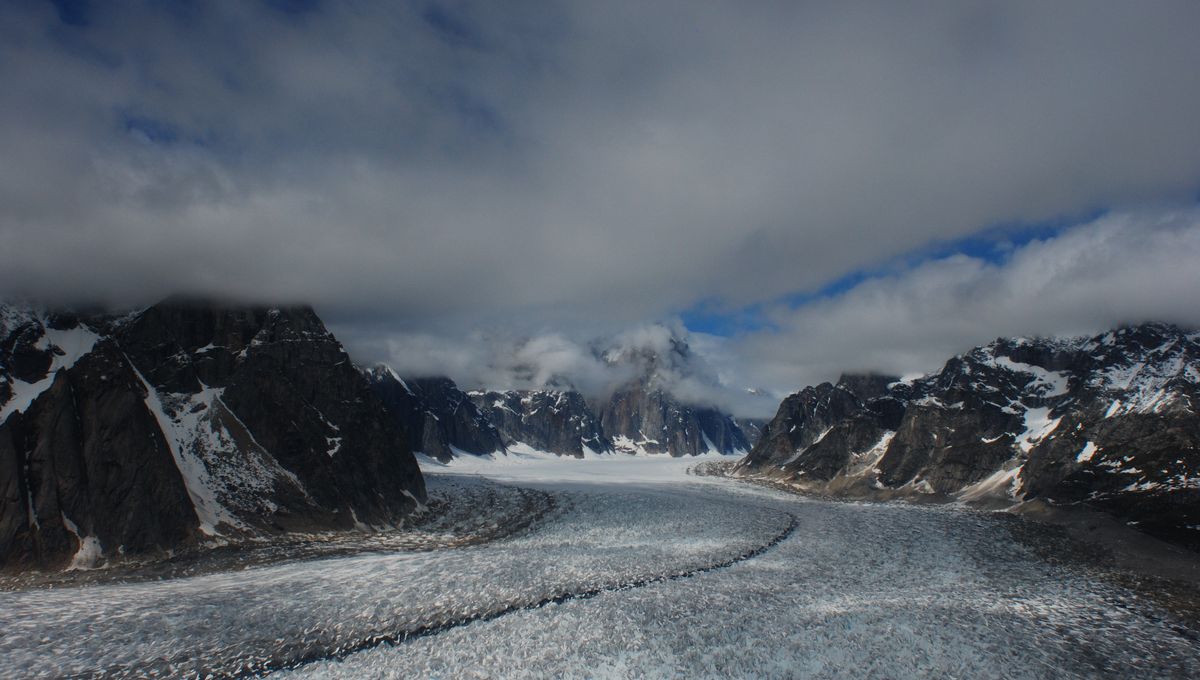
Plunging thousands of meters beneath the ice in Alaska’s Ruth Glacier is possibly the deepest gorge in North America. Known as the “Great Gorge” because of its vast size, the icy corridor has proven difficult to accurately measure, but new research might just have changed that.
Currently, Hells Canyon, on the border of Oregon and Idaho, is considered North America’s deepest gorge, extending 2,412 meters (7,913 feet) from summit to bedrock. However, it may have been bested – or at least matched – by the Great Gorge, according to new-and-improved estimates.
The novel work suggests that the gorge stretches 2,465 meters (8,087 feet) deep – give or take 65 meters (213 feet) either side – from the tip of a rock peak called Moose’s Tooth to the very bottom. This estimate would make it around the same depth as, and possibly even deeper than, Hells Canyon.
“Our estimates are up to two times greater than those suggested by global models,” the researchers write in their study, “and allow us to confirm that the Great Gorge rivals Hells Canyon as the deepest gorge in North America.”
Studying gorges is not easy – this particular valley is especially narrow and extends thousands of icy meters, making accessibility something of a problem. As such, obtaining an accurate measurement of the Great Gorge’s depth eluded scientists for decades.
This latest research represents the culmination of almost 90 years of speculation about the gorge – it was first identified for its extreme depth by the explorer Bradford Washburn in 1937, but just how deep it actually is remained a mystery.
Since then, researchers have attempted to analyze the gorge using radar and seismic investigations – the latter of which, back in 1992, suggested a depth of 2.7 kilometers (1.7 miles) with ice removed, which would make it the deepest gorge in North America. However, this estimate has since been called into question.
In an effort to finally put the debate to bed, the team behind the new study traveled to Ruth Glacier in May 2022, seeking detailed measurements of ice thickness with a view to estimating the gorge’s depth.
They used an ice-penetrating radar system towed by a snowmobile to map the glacier’s bed above the gorge – but the complex geometry of the gorge itself made it a more challenging target.
Unable to map the Great Gorge’s bed, the team estimated its ice thickness by combining readings from higher up the glacier and deeper airborne measurements supplied by NASA data to work out the rough dimensions of the ice.
As a result, they propose the ice to be between 610 and 960 meters (2,000-3,150 feet) thick along the glacier’s centerline within the gorge – and the total depth around 2,465 meters.
If this turns out to be true, it could be the deepest valley on the continent. Either way, it’s the best understanding we have yet of the Great Gorge’s dimensions – but the team are far from done investigating.
“I’ve got a feeling it could be deeper,” Robert Sheldon, a businessman who supported the expedition and whose father worked with Washburn, told The New York Times.
The study is published in the Journal of Glaciology.
Source Link: The Deepest Gorge In North America May Actually Lie In This Alaskan Glacier